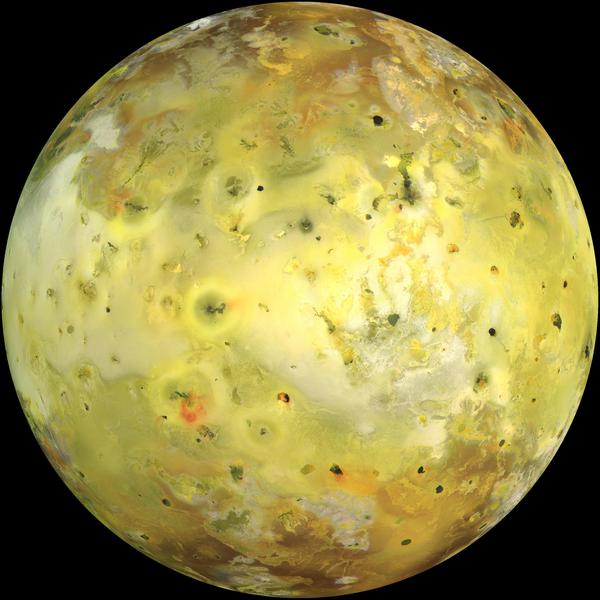This page describes an image Io
Caption: NASA's Galileo spacecraft acquired its highest resolution images of Jupiter's moon Io on 3 July 1999. Io is one of the four Jovian moons discovered by Galileo Galilei in 1610. Io's colours are witness to its extensive volcanic activity as they stem from sulphuric compounds. Tidal forces from Jupiter and the neighbouring moons are the cause for Io's volcanism.
Captions in other languagesCredit:
NASA/JPL/University of Arizona Credit Link
Related glossary terms:
Galilean Satellites
, Io
, Moons
Categories:
Solar System
License: Public Domain Public Domain icons
The media file captions presented on the OAE website were written, translated and reviewed by a collective effort from the OAE, the OAE Centers and Nodes, the OAE National Astronomy Education Coordinators (NAECs) and other volunteers. You can find a full list of credits for our translation project here. All media file captions are released under a Creative Commons CC BY-4.0 license and should be credited to "IAU OAE". The media files themselves may have different licenses (see above) and should be credited as listed above under "credit".
Captions in Different Languages:
Caption: Le 3 juillet 1999, la sonde spatiale Galileo de la NASA a acquis les images à la plus haute résolution du satellite de Jupiter Io. Io est l'une des quatre lunes joviennes découvertes par Galilée en 1610. Les couleurs de Io témoignent de son importante activité volcanique, car elles proviennent de composés sulfuriques. Les forces de marée de Jupiter et des satellites voisins sont à l'origine du volcanisme de Io.
Credit: NASA/JPL/Université d'Arizona
Related glossary terms: Galilean Satellites , Io , Moons Caption translation status: Not yet approved by a reviewer
Caption translators: Gilles Remy
Caption: La sonda Galileo della NASA ha acquisito le immagini a più alta risoluzione della luna di Giove Io il 3 luglio 1999. Io è una delle quattro lune gioviane, scoperte da Galileo Galilei nel 1610. I colori di Io testimoniano la sua vasta attività vulcanica, poiché derivano da composti solforici. Le forze di marea di Giove e delle lune vicine sono la causa del vulcanismo di Io.
Credit: NASA/JPL/Università dell'Arizona
Related glossary terms: Io , Lune , Satelliti galileiani Caption translation status: Approved by a reviewer
Caption translators: Giuliana Giobbi
Caption reviewers: Rosa Valiante, Rodolfo Canestrari









